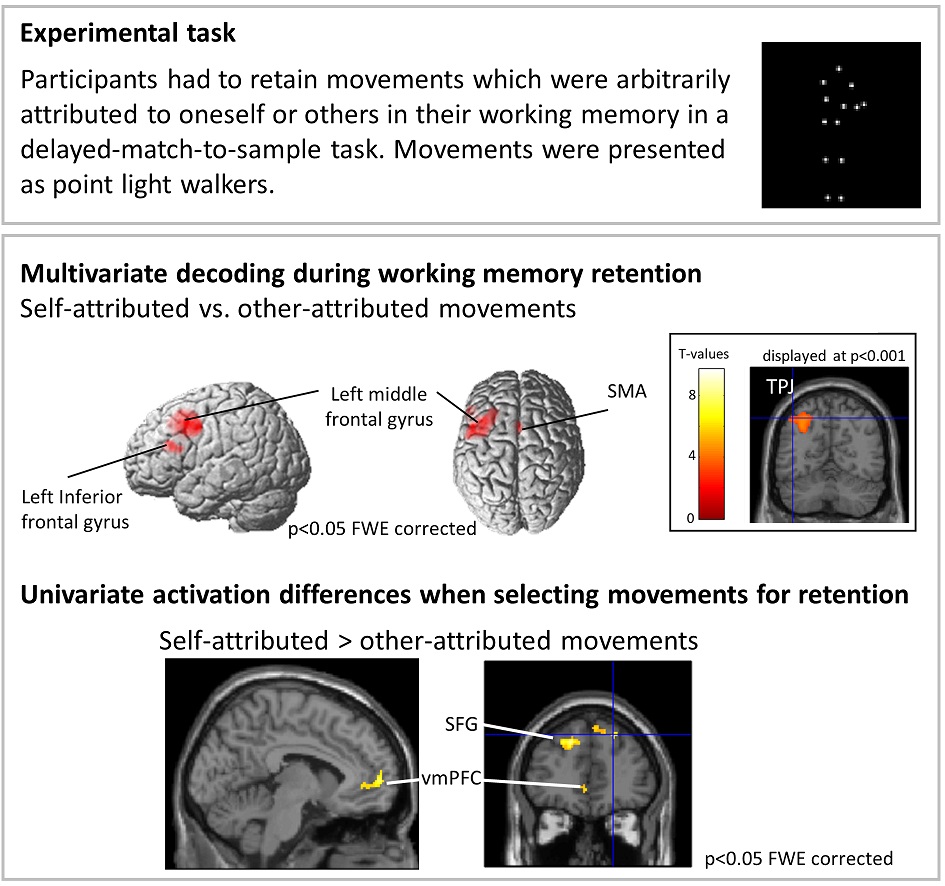Neural correlates of self-associated movements
We showed full body movements to participants and asked which brain areas code them as MY versus OTHER'S movements.
Our participants saw movements like this one and were told to play them in their memory as if they were watching THEMSELVES or ANOTHER person.

We recorded their brain activity with fMRI and used MVPA to find which brain areas showed different patterns of activity for self- and other-attributed movements
We found that attributed identity could be decoded from areas showing mirror activity (IFG, MFG), motor areas (SMA), and TPJ - which is regarded as a hub responsible for self-other distinction

We also found that when participants learned that they need to encode a self-attributed movement then their vmPFC showed increased activation. vmPFC is a central hub responsible for processing of abstract self-related information.
Our findings show how different aspects of the self (body-related and abstract) involve activity in different brain areas
Read more about our study here: Woźniak, M., Schmidt, T.T., Wu, YH., Blankenburg, F., Hohwy, J. (2022). Differences in working memory coding of biological motion attributed to oneself and others. Human Brain Mapping, 43(12), 3721-3734. https://doi.org/10.1002/hbm.25879
